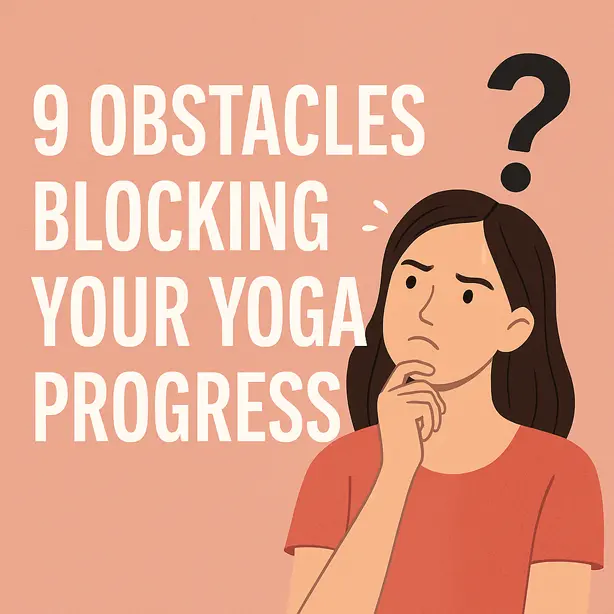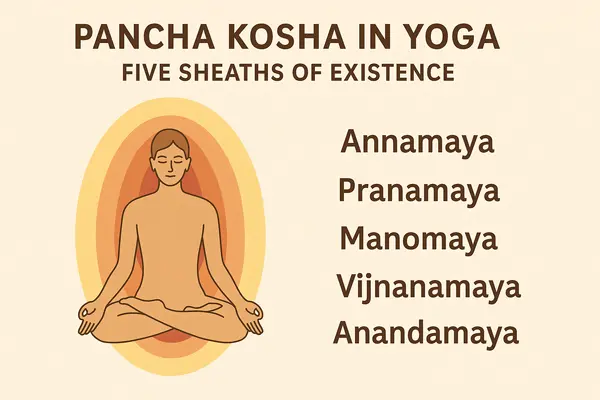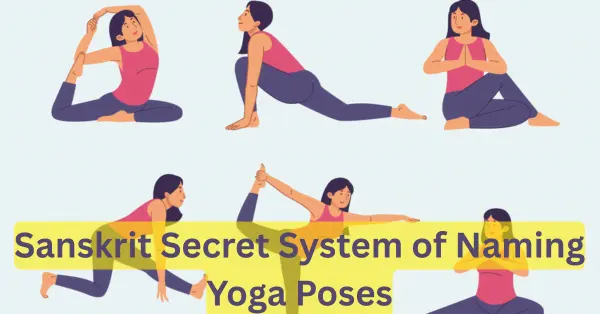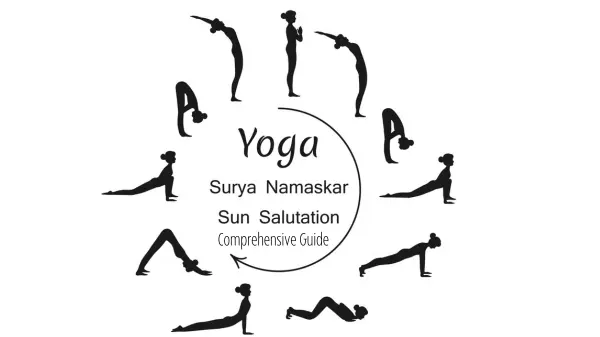The world functions in duality. Negative exists simultaneously with positive. If yoga has miraculous advantages, it has many obstacles (Antaryas) and pitfalls.
An online survey found barriers included dullness, excessive talking, strict adherence to rules, laziness, physical and mental overexertion, fickleness and wandering of mind, unsteadiness of mind, procrastination, and oversleeping.[1] Now let’s see how these relate to the original 9 obstacles of yoga.
The nine obstacles in yoga (briefly)
1. Vyadhi (Physical disease)
2. Styana (Mental Lethargy)
3. Samshaya (Doubt about oneself, technique, and teacher)
4. Pramada (Carelessness)
5. Alasya (Laziness)
6. Avirati (Stubborn attachments to sense objects)
7. Bhranti Darshana (Illusion or Hallucination)
8. Alabdha Bhumikatva (Non-attainment of firm ground)
9. Anavastitatva (Non-maintenance of firm ground)
The nine obstacles in yoga in detail
1. Vyadhi (Physical disease)
According to Maharishi Patanjali, if you are physically weak, tired or exhausted, it will be hard for you to practise yoga. You may feel so down from within that you may not be able to take the action or the initiative.
Hence, you need to be physically robust and active to take up Yoga. However, to apply yogic wisdom in your life, you may not need it. Still, you have to have a strong body to practise Asanas.
2. Styana (Mental Lethargy)
Sometimes you don’t feel like practising Asanas, Pranayama or Meditation. There are situations where you won’t be able to take care of your mental stuff. When the small or negligible mind chattering takes over your mind, it turns into mental illness or a limited/narrow mindset.
For example, why is this happening to me? Why did he say this to me? I shouldn’t be over here…I shouldn’t face this kind of situation. All this chattering creates useless dead weight inside your mind.
A limitless and open mindset thinks that the universe takes care of me. The universe is there to support me, and I am going to move on the path of Yoga without any complaints. I will choose pure happiness, whatever the situation may be.
3. Samshaya (Doubt about oneself, technique, and teacher)
Samshaya means doubt. Doubt about three things- oneself, the yoga technique and your Guru.
Doubt about oneself- I am not flexible to do the Asanas, I am not good at making pranayam or meditation. I am not worthy of this technique or my Guru. You start doubting your potential and capabilities.
Doubt about the technique- Will this Yoga technique work? Has it ever worked on anyone? When you start the technique of the master, it becomes an obstacle itself.
Doubt about Teacher or Guru- Does the Guru itself practice the Technique? You doubt the Guru. One may start doubting the whole existence at one point.
4. Pramada (Carelessness)
Carelessness or misplaced priorities. You know what you have to do, but still you stay in your comfort zone. You are negligent of something that you already know is wrong. This eventually becomes an obstacle in the path of Yoga.
5. Alasya (Laziness)
I will relax today, I will do nothing. This is not wrong, but when you do this every day, it becomes an obstacle. For example, you become a couch potato, watching TV and munching endlessly, and sleeping.
6. Avirati (Stubborn attachments to sense objects)
In simpler terms, Avitrati is cravings. You are carried away because of your sense organs. For example, I crave junk food and I keep eating and eating, and then I start puking. Another example can be of endless sexual stimulations.
7. Bhranti Darshana (Illusion or Hallucination)
Imaginations. Some people say they want to see the white light while meditating. Some share the magical experiences while meditating. All these are illusions. A person may get stuck in this obstacle easily. One should move on from these experiences.
8. Alabdha Bhumikatva (Non-attainment of firm ground or Progress)
You are not firm in your belief. For example, one may say I have practised Yoga for so many years and I have not reached anywhere. This doubt about your progress is an obstacle. One may leave the practice once and for all because of it.
9. Anavastitatva (Non-maintenance of firm ground or Progress)
There is instability within you. If certain situations arise, you are unable to remain still or centred from inside. You deviate from the core of Yoga.
How to Overcome Obstacles in Yoga
1. Overcome Vyadhi (Physical disease)
- Focus on a balanced diet, rest, and exercise
- Try yoga and Ayurveda to overcome chronic pain or disease
- Integrate holistic healing systems
2. Overcome Styana (Mental Lethargy)
- Pranayam helps with mental clarity
- Focus on setting small, achievable goals first
- Avoid mental diarrhoea with meditation
3. Overcome Samshaya (Doubt about oneself, technique, and teacher)
- Read original scriptures and the lives of Yogis
- Practice self-reflection
- Seek the guidance of your Guru or trusted teacher.
4. Overcome Pramada (Carelessness)
- Approach every session as if it’s your last day on Earth
- Track your growth
- Be mindful in life
5. Overcome Alasya (Laziness)
- Remind yourself of the benefits of the yoga practices
- Take baby steps before you can fly
- Don’t over-exhaust yourself.
- A good sleep routine and energy boosting habits will help
6. Overcome Avirati (Stubborn attachments to sense objects)
- Try to realise the temporary nature of all sense pleasures
- Natural contentment will help
- Withdrawal from the senses with the help of Yoga
7. Overcome Bhranti Darshana (Illusion or Hallucination)
- Keep your feet on the ground after a little success on the path
- Don’t proclaim esoteric experience openly. Share only with your Guru.
- Stay Humble
8. Overcome Alabdha Bhumikatva (Non-attainment of firm ground or progress)
- Practice surrender and patience
- Learn that progress is non-linear and often subtle
- Keep practising in an unwavering way
9. Overcome Anavastitatva (Non-maintenance of firm ground or Progress)
- Always rely on the basics
- A spiritual company or satsang helps immensely
Creating a Memory about Obstacles
One obstacle may lead to many others. Alabdha Bhumika and Samsaya can create one another. If you get carried away by the senses, it can be because of carelessness and laziness. Here, Avirti, Alasya and Pramada interrelate.
According to a study, the most common barriers for not being able to practice yoga regularly were physical illness, mental illness, lack of clarity of correct method, not having found a correct teacher, doubt about the benefits, varying eating, sleeping, and waking times, other priorities, and lack of motivation and enthusiasm.[2]
Conclusion
The obstacles in Yoga are not permanent. It’s merely an opportunity to reach the ultimate way of Yoga, i.e. Liberation. Obstacles reveal your likes and dislikes in life. One can use it positively as a stepping stone rather than succumb to it.
Reference
[1] Dayananda HV, Ilavarasu JV, Rajesh SK, Babu N. Barriers in the path of yoga practice: An online survey. Int J Yoga. 2014 Jan;7(1):66-71. Available from: Link to Study. <Go to Citation>
[2] Verma A, Shete SU. Barriers for regular yoga practice among adult population. J Appl Sci Clin Pract. 2023;4(2):101-105. Available from: Link to Study. <Go to Citation>





